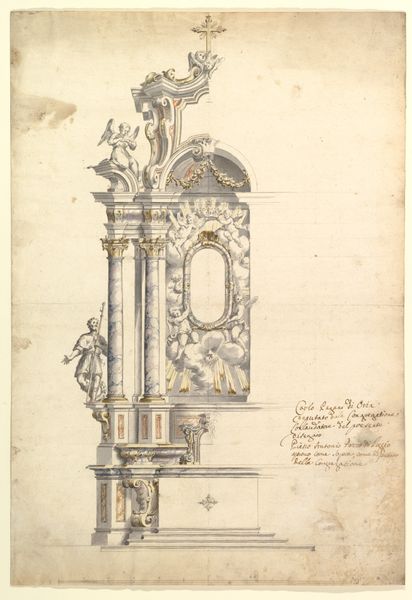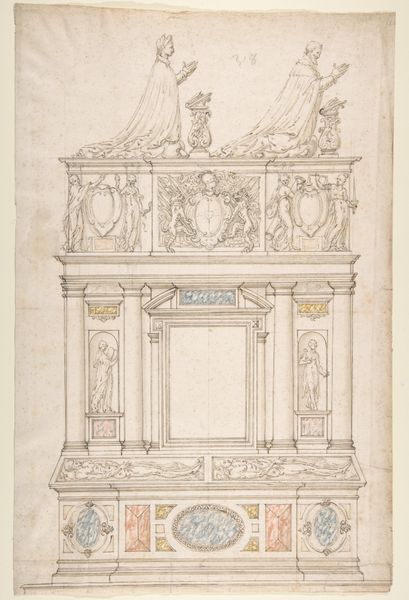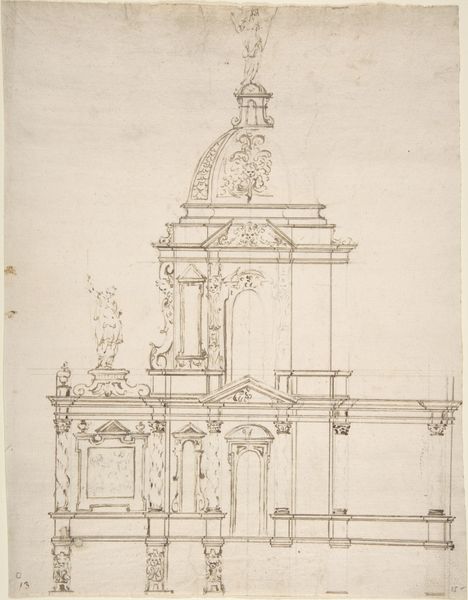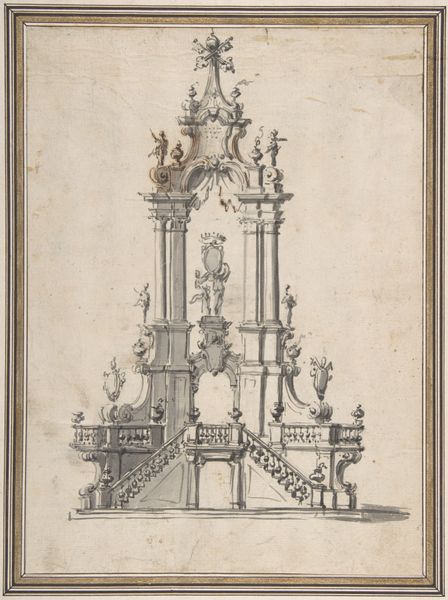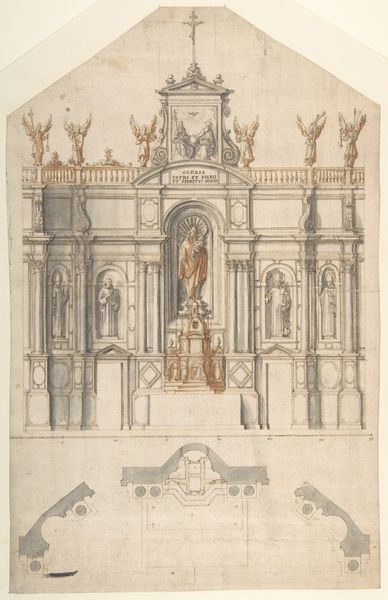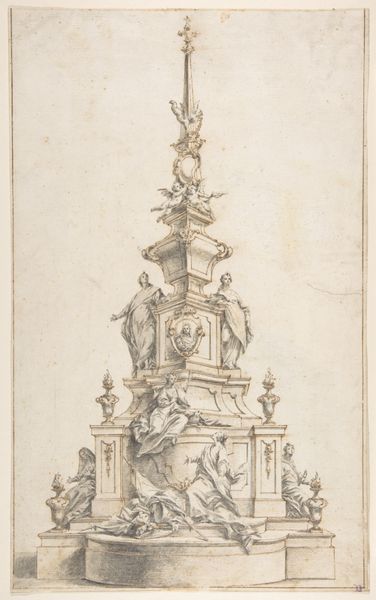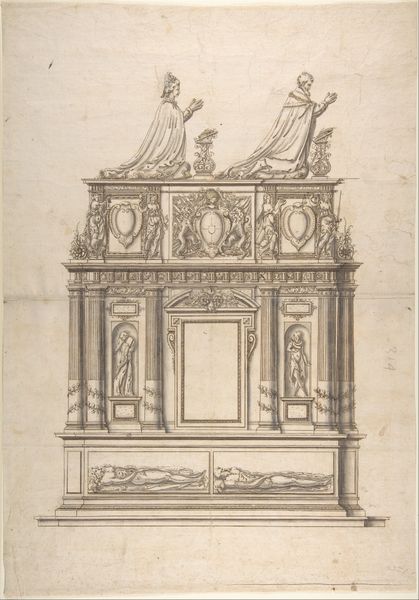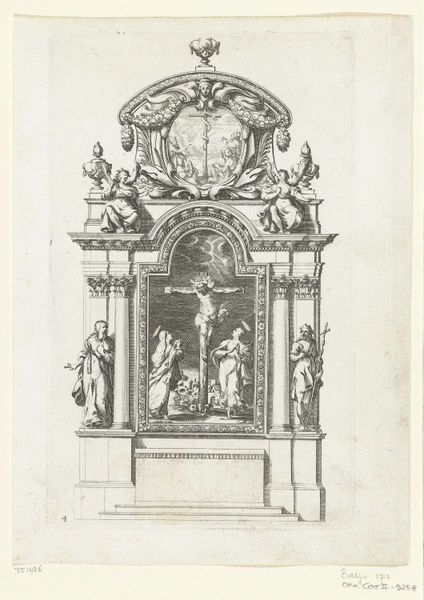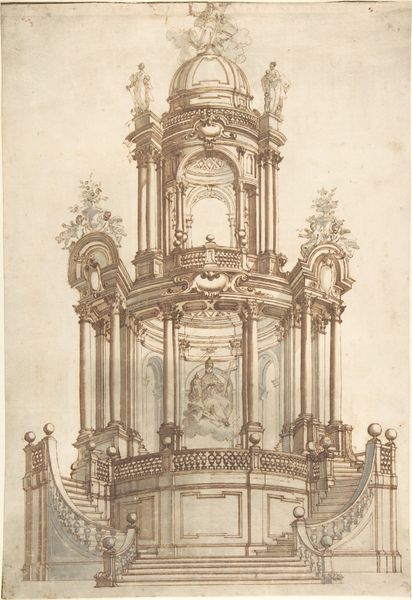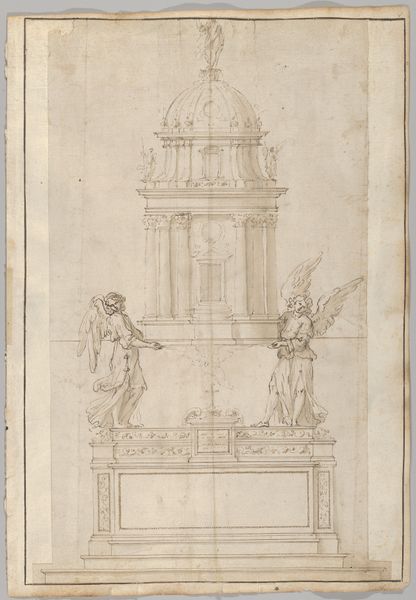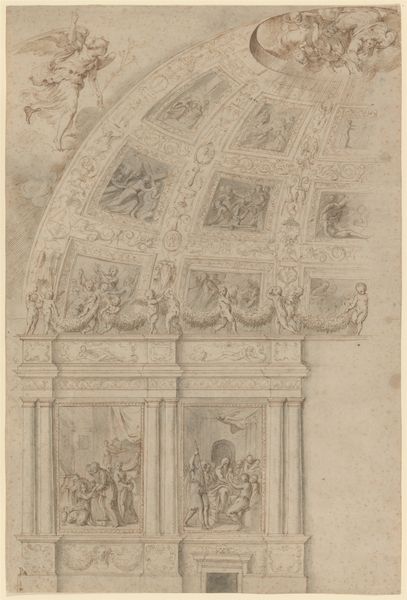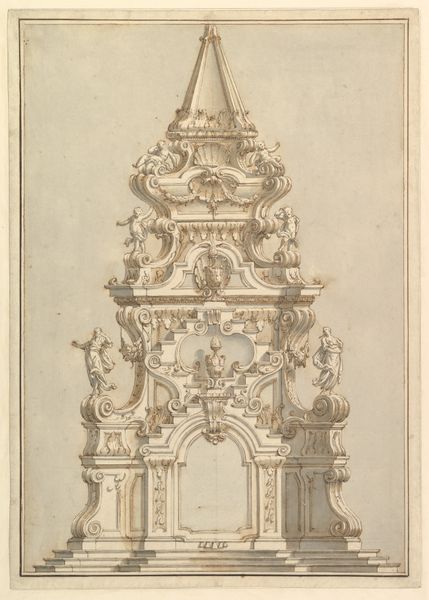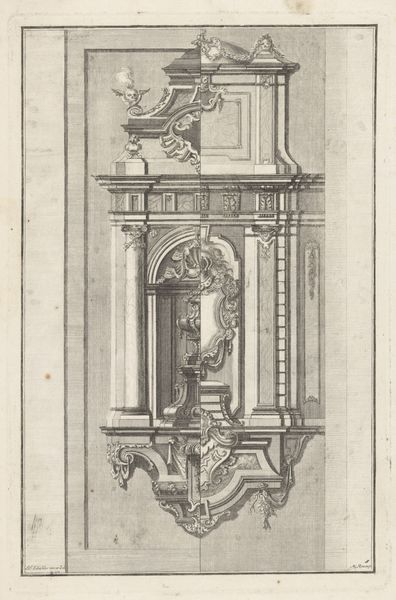
drawing, print, ink, pencil
#
drawing
#
baroque
# print
#
ink
#
pencil
#
history-painting
Copyright: Public Domain
Curator: Look at the intricacy in this 17th-century drawing, "Design for a Ciborium," currently housed at the Metropolitan Museum. It's rendered in pencil, ink, and what appears to be print—quite a mixed media approach. Editor: It has this somewhat fragile air about it, doesn't it? All the fine lines seem so precise. It’s also got this undeniable heaviness from all that intricate detail; a kind of controlled exuberance. Curator: Absolutely, typical of the Baroque style it embodies. What strikes me is not just the ornamental aspect, but how the drawing would function within the religious and political climate of the time. Ciborium designs like this served as potent visual declarations of power and faith for the Church. Think of the skilled labor and access to resources required for realizing this! Editor: Yes, there’s the question of workshops and who had access to such detailed craftsmanship. Was this design commissioned directly from an artisan, or perhaps part of a larger series of pattern drawings circulated among different workshops? How does this example stand compared to other similar objects—in terms of material cost, production process, skill? Curator: That’s insightful. It raises questions about standardization versus unique creation. Did artisans rigidly follow designs, or was there room for individual interpretation that impacted the function and public display of it. Editor: It also makes you wonder about the circulation of such designs. Were these blueprints intended for a single church, or might they be distributed and reinterpreted across different regions, subtly altering their symbolic weight in various sociopolitical landscapes? Curator: A vital point. The reception and alteration of this design across geographical boundaries provides a clearer picture of how visual narratives functioned and were transformed through cultural exchange. Editor: Examining art through the lens of material production, circulation, and usage really enriches how we interpret these historical artifacts. Curator: Indeed, it allows us to move beyond aesthetic appreciation and see these works as vital instruments in historical dynamics.
Comments
No comments
Be the first to comment and join the conversation on the ultimate creative platform.
